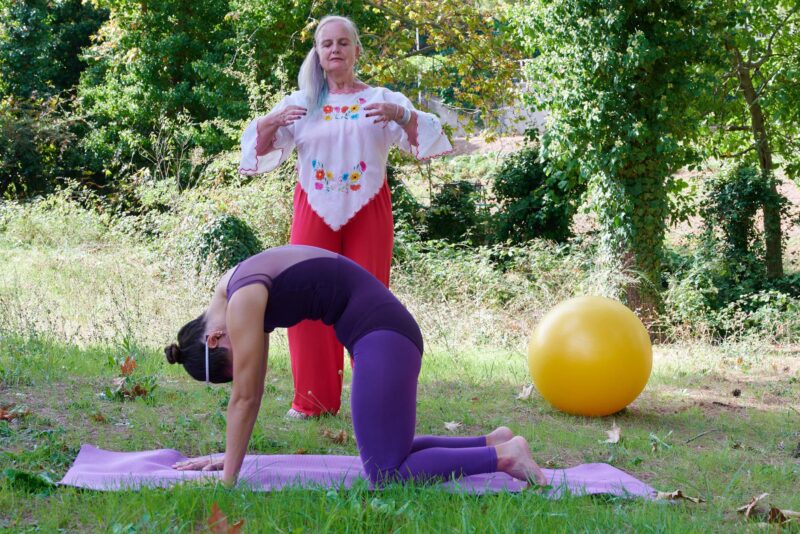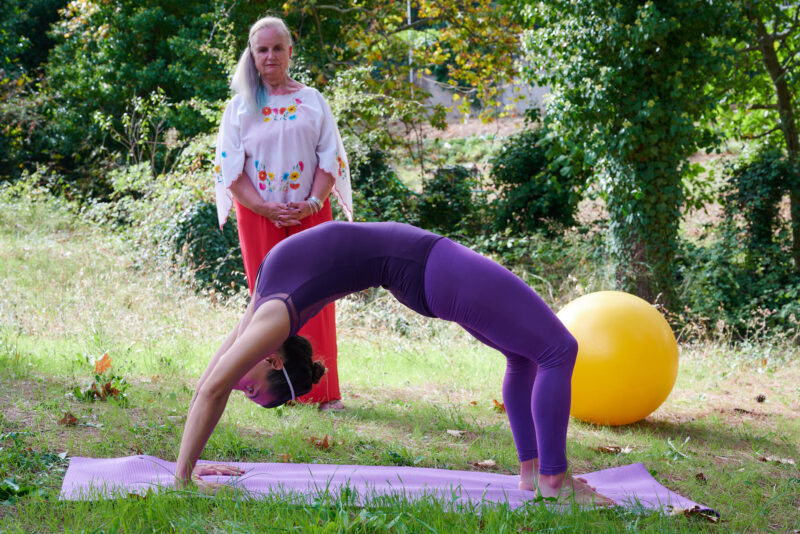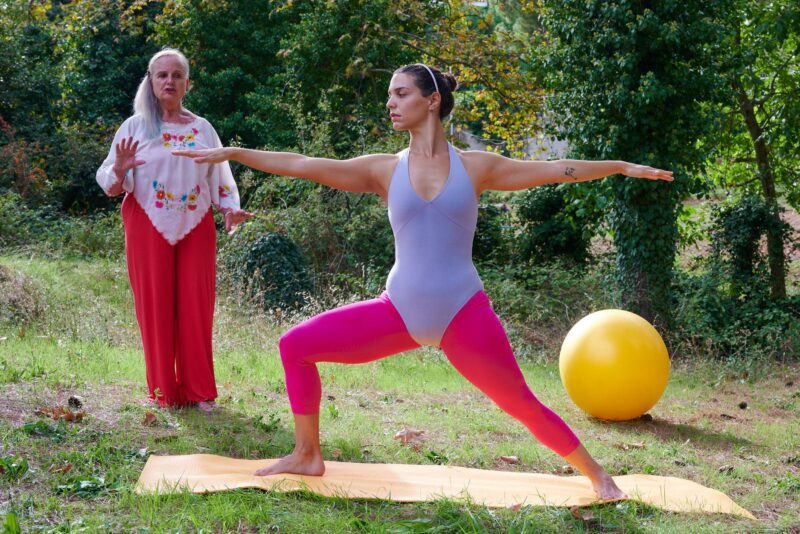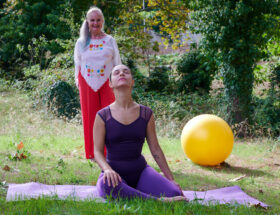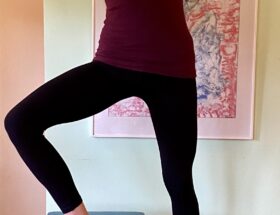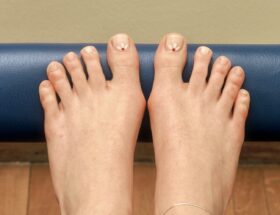Here are 12 areas in which I believe yoga has a lot to offer.
THE SCIENCE OF BREATHING
There is a whole science of breathing in Hatha Yoga. It is called Pranayama. Pranayama consists of many different breathing exercises, which strengthen our muscular and fascial support for all phases of breathing and liberates the diaphragmatic movement. The movement of the diaphragm is large, when it is healthy, and creates a natural, therapeutic massage for all the organs of the body and the spine. The breathing diaphragm has the largest concentration fascia in the body. It is important that it be free of tension. A healthy breathing diaphragm has a positive effect on all the diaphragms of the body such as the pelvic diaphragm.
Healthy, powerful breathing has positive effects on the body right down to the cellular level.
We know that Joseph Pilates placed an emphasis on breathing.
Pilates’ teachers usually teach one form of breathing nowadays, “breathe in through the nose and out through the mouth.”
I learned from my teacher, Jerome Andrews (who was 10 years with Pilates) that a much bigger variety of breath patterns were used, such as holding the breath after the out breath, sighing breath and a long slow out breath.
Each type of breath has it’s own specific purpose.
I personally have enjoyed and benefited from all these types of breathing.
I have applied the Ujjai breath, from yoga, to Pilates exercises and found it to be very effective especially for students with challenges.
Pilates talked about flow. Yoga can be practiced according to the rhythm of the breath.
PRECISION AND SACRED GEOMETRY
One of the principles of the Pilates technique is precision.
Hatha Yoga is practiced adhering the principles of sacred geometry.
The way we place our feet and hands are very specific in yoga. It is also important in the Pilates technique.
Good placement of the skeletal body is as important in Yoga as in Pilates.
CONCENTRATION
In the beginning stages of Hatha Yoga the eyes are closed until the student develops a deep and honest relationship with the inner body. This relationship continues to grow and the student advances to being able to be in touch with the body and at the same time have the eyes open and not be distracted by his or her surroundings. The gaze is then focused very specifically on one point, which varies according to the asana.
The deep relaxation, Sarvasana, (corpse pose) is practiced so that we can calm ourselves to a point of being able to hone our concentration. Yoga teaches us how to focus on one point, whether it is, (for example) a part of the body, a specific set of words, like a mantra or a candle flame. We are taught to focus and when we realize we have lost our concentration we are taught to simply bring our focus back to the point of focus without wasting energy criticizing or berating ourselves. Rather this is seen as a natural part of our process.
As beginners in yoga we breathe freely and hold the asanas for as long as is comfortable for us and as we progress we count our breaths to bring more balance to our practice, on all levels, and to increase our ability to concentrate.
DEEP RELAXATION
Deep Relaxtion, Savasana, Corpse pose is practiced for a minumum of 20 minutes. This is not something that is taught in Pilates.
The intention is to let go of tension on all levels whether it is physical, psychological or emotional. We literally empty ourselves, rather like a small death (hence the name “Corpse Pose). It is only when we are empty that we can bring fresh, positive energy in to ourselves (often via the breath).
This helps people deal with depression, anxiety, and worry and brings them back in touch their essence. This is obviously beneficial for all of their life. It has a positive effect on their ability to practice Pilates or Yoga.
PRESENCE
As yoga teachers we consciously develop our presence as teachers. We are taught that there are not two roles, the teacher and the student but rather we are one.
A yoga teacher develops his or her energy so that he or she teaches without words. My own yoga teacher had only to look at her student and he felt his heart center open.
THE TRANSFORMATIONAL POWER OF TOUCH
Pilates teachers use touch but yoga teachers, following my course learn how to imbue their touch with qualities that help their students to trust them and therefore respond more fully to them.
My student teachers learn how to sense the others’ body, what it needs, its internal movement and the energy body.
As yoga teachers we are taught that out internal stance affects the quality of touch and how far people will respond to that touch.
We are taught to coordinate our breathing with the student we are touching. This brings our respective auras into harmony.
Everyone can develop these abilities.
POSITIVE LUCID INSTRUCTIONS AND THE VIBRATION OF THE VOICE OF THE TEACHER
All my teachers are taught to always find positive and lucid ways of instructing.
The choice of words is very important. A lot of people have suffered some kind of abuse at home, at school or in their work environment. It is essential to phrase things in a positive way.
It has been found that sound and music, according to the vibration, can transform and heal a person.
A yoga teacher learns to use the vibration of their voice like an instrument. There are specific exercises to develop this skill.
CONSCIOUS LISTENING
We all, as teachers, listen. A yoga teacher consciously leaves enough space for the other to express herself, acting like a sounding board and refraining from an immediate response leaves room for deeper levels of consciousness to be revealed.
We learn how to consciously listen and to not rush to respond or to have the “answer” but rather that the answer be revealed.
STRETCHING
Both Pilates and Yoga encourage a balance between muscular tone and limberness.
The relaxation and breathing techniques of Hatha Yoga are particularly helpful for people suffering from stiffness and or pain.
DISCIPLINE
Yoga students are taught to always be early for class. It is essential not just for how the body is gradually prepared for different asanas as in Pilates but also because a relaxed focused atmosphere is created from the beginning of class and that builds all through the class until the end. A very specific energy is achieved. A latecomer interrupts that process. Lateness is therefore not accepted in yoga.
Once entering the yoga space students do not talk between one another. There is no conversation between students or between students and the teacher. No questions. Just the vibration of the sound of the teacher’s voice and clear lucid instructions. This is also to build a specific, special atmosphere.
Time is left at the end for sharing or questions.
THE SACRED SPACE
The space we practice yoga in becomes imbued with the energy of the practice. It is a sacred space. We light a candle before our practice. The light of the candle reminds us of the light that we are moving towards.
We create an altar, which may have inspirational images; photos of great teachers, crystals, flowers and essential oils may be burnt. All these things remind us of where we wish to go with our practice.
The more consciously we create our space whether it is for Pilates or Yoga the more we quickly move into the appropriate state of mind for our practice.

